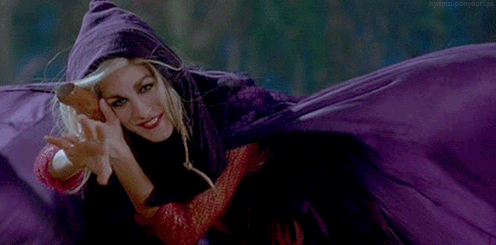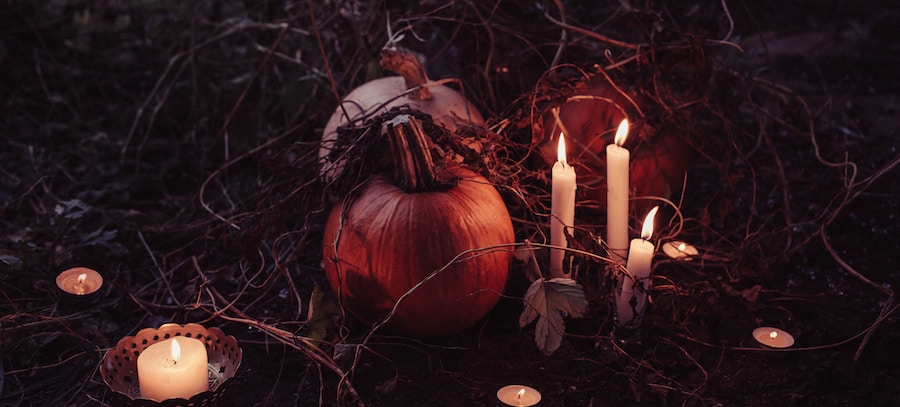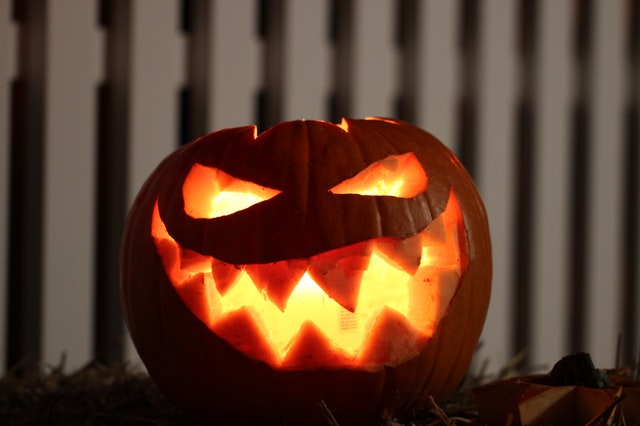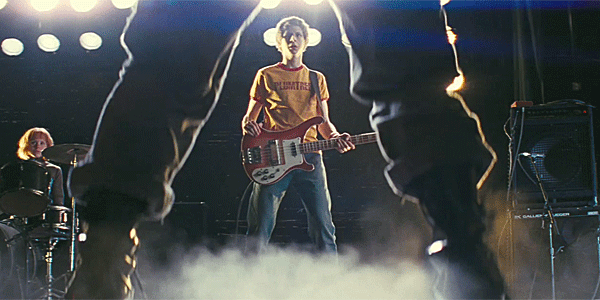Literary Halloween Party Songs
When Sarah Sanderson comes calling…I’ll follow.
Here a few orange and black “nuggets” to impress your friends over the apple-bobbing bucket this Halloween. P.S. Beware “dog germs,” of course.
Essential Question #1: Did Edgar Allan Poe co-write the theme to Hocus Pocus?
In Disney’s cult classic Halloween staple, (let’s face it, Hocus Pocus is to October what A Christmas Story is to December), Sarah Jessica Parker’s sultry witch coos a little ditty that hypnotizes all of Salem’s children. That moment in the film, admittedly one of the more haunting, and probably the launch of many a sexy Halloween costume idea, is mired in literary controversy.
In the infancy of the internet, the lyrics of the song were attributes to none other than that American daddy of macabre — Edgar Allan Poe. The story went that Poe published a 19th Century poem called “Come Little Children,” which were the exact same words as the Hocus Pocus spewed by Sarah Sanderson.
The one exception was that the word “garden” was used instead of Poe’s original word “shadow.” The myth follows that Disney changed the word to make the poem less “dark.” Though, considering that Hocus Pocus is basically a comedy about “eating” children’s souls…I’m not sure “lightening” was high on Disney’s priorities.

The problem is that Poe scholars can’t place the work in his canon, and lyricist Brock Walsh maintains the lyrics are original. Still, the words are widely credited to Poe online, and the truth of the mystery itself might require a virgin and a black candle.
Essential Question #2: Is “The Monster Mash” the undisputed King of Halloween songs?
If you love Halloween, you need to research Mr. Halloween, John Zacherle.
Zacherle played Roland, the titular horror movie host who was a forerunner of Elvira and Svengoolie. He hosted American Bandstand, produced several Halloween albums and hosted Halloween radio programs. He even had a top ten hit single in the United States in the late 50s with his song Dinner with Drac, Part 1.
Though this song is not quite as famous, it came out a full four years before the king of all Halloween songs: Bobby Pickett’s The Monster Mash.
And, the case can be made that Zacherle’s song is the better “literary” effort. Pickett’s Mash uses a couplet formation to tell its familiar Halloween tale of a Frankenstein born into the lab to find he’s “gotta dance” a dance he calls “The Mash.”
I was working in the lab, late one night
when my eyes beheld an eerie sight,
for my monster from his slab began to rise,
when suddenly, to my surprise —
But Zacherle’s song is composed of four perfectly formed limericks following the AABBA scheme made famous by old men telling inappropriate jokes.
What a swimmer is Dracula’s daughter
though her pool looks more rigged than it oughta.
Blood stains the boat,
but it’s easy to float,
because blood is much thicker than water!
Zacherle’s demonic laughter and a killer surf guitar winding through the song make Dinner a far superior, if less popular, and far more LITERARY Halloween anthem. Whip this one out and have some geeky Halloween fun by daring your party guests to compose their own frightful limericks!
Essential Question #3: Is the Big Bad Wolf so big and/or bad? Discuss.
You know Sam the Sham and the Pharoahs for their Animal House popularized hit. A song that was so nonsensical, it was deemed “explicit” when it was released in 1965, and of course, went on to be the biggest hit in America that year.
A year later, the same band released Lil Red Riding Hood. Though a lot less popular, the song is no less interesting and surprisingly, rife with theme. Written from the point of view of the wolf, it strips away the fairy tale’s subtext and makes the wolf a literal and hopeful suitor to Red, who is described in the song (cringe alert!) as a “little, big girl.”
The song’s premise supposes the wolf’s suppressed desires for Red, which he cloaks metaphorically and literally with the “sheep’s clothes.”
What full lips you have! They’re sure to lure someone bad.
Sure, the premise is no less creepy, stalkery than the original story, but the song adds a layer to the wolf. He expresses what seems like genuine hope to be “accepted” and ultimately “loved” by Red.
What a big heart I have! The better to love you with. Lil Red Riding Hood, even bad wolves can be good.
The song opens with howls, but ends with the “wolf” trying to keep up appearances through a series of awkward “BAAHs.” And the song seems to hint at a redemptive ending for the wolf.
Either way, literary subtext is unveiled by playing with perspective, and Sam the Sham may have created one of the early examples of iconic villainy repurposed as misunderstood, transgressive heroics. See later examples such as Wicked, Maleficent and Frozen.

Joe Costal
Joe Costal knows too much about stupid Halloween songs. His writing has appeared in dozens of magazines and journals, most recently Philadelphia Stories and The Maine Review. His poetry is included in Challenges for the Delusional II by Diode Editions. An excerpt from his novel is forthcoming in Painted Bride. Joe teaches writing at Stockton University. Visit him online at joecostal.com.



